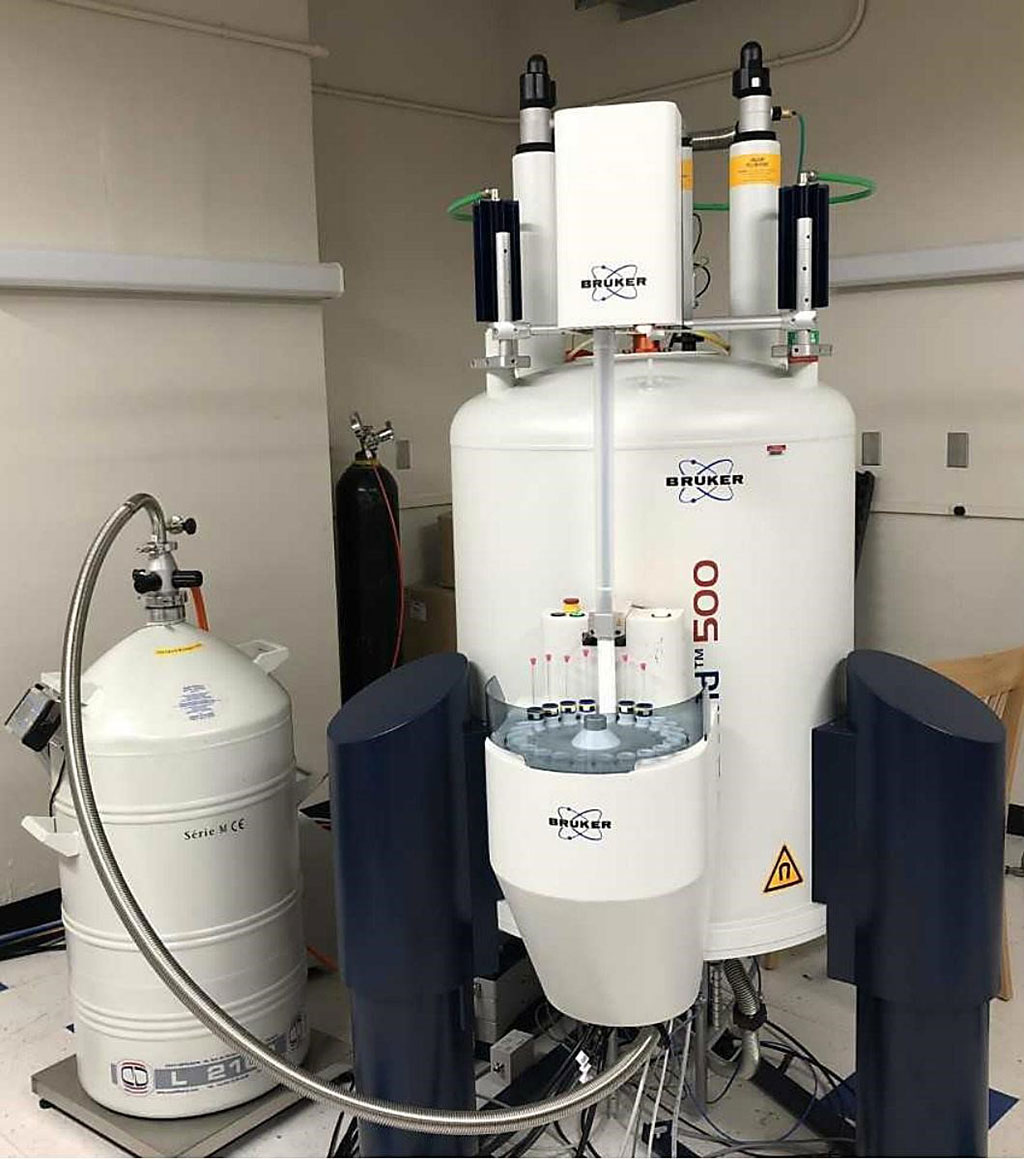Amino Acids Predict Prognosis in Patients with Acute Dyspnea
By LabMedica International staff writers
Posted on 15 Nov 2021
The main symptom of dyspnea is labored breathing. It may last for a minute or two after strenuous activity or it could be a chronic problem. One of the most common symptoms in the emergency departments (ED) is dyspnea, presented in roughly 3 to 4 million annual ER visits in the USA.Posted on 15 Nov 2021
Chronic cardiorespiratory diseases, which underlie susceptibility to episodes of acute dyspnea, and acute events leading to an exacerbation, pose severe challenges to the body and result in metabolic changes, often mediated by the release of stress hormones. The severity of the disease state in patients with acute dyspnea may also be related to increased levels of specific amino acids.

Image: The AVANCE III, 500 MHz spectrometer has a room temperature QXI probe, triple axis gradients, temperature controller and automatic tuning (Photo courtesy of University of Idaho)
Clinical Scientists at Lund University (Malmo, Sweden) included in a study, 663 patients to identify amino acids that can predict risk of 90-day mortality in patients with acute dyspnea. Blood pressure, oxygen saturation and heart rate were measured using a fully automated oscillometric device (CARESCAPE Monitor B850 or B650, General Electric Healthcare, Chicago, IL, USA).
Plasma concentration of C-reactive protein (CRP), lactate and creatinine was measured using an ABL800 Flex machine (Radiometer, Crawley, UK) or Afinion AS100 Analyzer System (Abbott, Abbott Park, IL, USA). Frozen serum samples were analyzed using a proton nuclear magnetic resonance (NMR) platform, the AVANCE III, 500 MHz spectrometer (Bruker, Billerica, MA, USA), which included nine selected amino acids chosen for revision in the study.
The investigators reported that during the 90 days of follow-up, 80 patients died, 69 of whom had been admitted to a ward upon their arrival in the ED, and six patients died in the ED. An “Amino Acid Mortality Risk Score” (AMRS), summing absolute plasma levels of glycine, phenylalanine and valine, demonstrated that among the patients belonging to quartile 1 (Q1) of the AMRS, only four patients died, compared to 44 patients in quartile 4. Using Q1 of the AMRS as reference, each increment of 1 SD in the AMRS was associated with a hazard ratio (HR) of 2.15 for 90-day mortality, and the HR was > 9 times higher in Q4.
The authors concluded that glycine, phenylalanine and valine are associated with the risk of 90-day mortality in patients admitted to the ED with a primary symptom of acute dyspnea. A score using these amino acids may guide in risk assessment, supporting decision making processes to establish appropriate level of care and treatment intensity. The study was published on October 30, 2021 in the journal BMC Emergency Medicine.
Related Links:
Lund University
General Electric Healthcare
Radiometer
Abbott
Bruker














